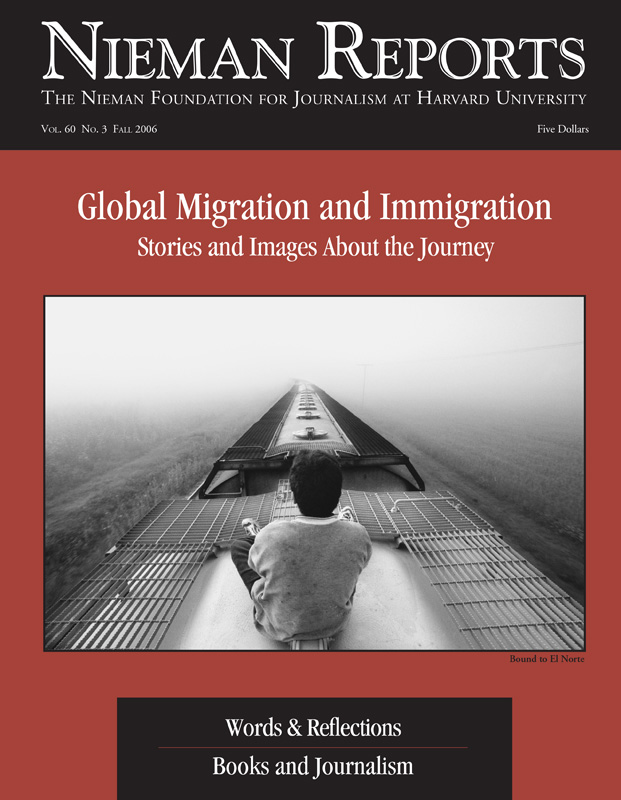Think immigration and a handful of American cities spring to mind — Los Angeles. New York. Chicago. And Miami. In any of those places, the story of immigration reform likely would be one of shared beliefs, simmering anger, and a mobilized community — right? But the latest round of immigration proposals, debated in hearings from Washington to Miami, has illuminated some key distinctions that set the South Florida city apart: splintered demographics, diverging goals among ethnic groups, and a division between those who came legally and those who did not.
When it comes to immigration, Miami doesn’t speak in one voice, but in many. The region is built on ethnic groups and subgroups, each with its own set of passionately held ideals, each vying for space in the newspaper or exposure on TV. Politics change by neighborhood, from Little Havana to Little Haiti to Weston-zuela (the new Broward County suburb of Weston nicknamed for its heavy population of Venezuelans.)
Even though Florida has an estimated one million undocumented workers, many immigrant communities don’t see this current struggle as their own: Cubans have their wet-foot/dry-foot policy. (Make it to land and a Cuban migrant can pursue residency a year later; if found at sea, that same Cuban is sent home or to a third country.) Many Hondurans, Nicaraguans and Salvadorans have their own special exception — with “temporary” status as refugees from natural disasters. Haitians see their fight in terms of securing temporary residence and work permits. Each group follows its own agenda. And with the exception of many Cubans, who still hope to topple Fidel Castro, each sees its struggle for a place in the United States as the primary mission, critical to survival.
The Fragmented Story
While this single-mindedness might work well in pursuit of narrow policy changes, the fragmentation of viewpoints tends to diffuse reaction — and media coverage — in this debate. The numbers tell the story: In March, more than a half-million demonstrators were said to have shown up in Los Angeles to support immigration reform. In Chicago, as many as 300,000 people reportedly turned out. And in Miami? The most generous estimates of that city’s May 1st demonstration put the number at 10,000. Even though reporters, TV crews, and radio commentators here had geared up for a possible last-minute surge in participation, predictions of a relatively low turnout came true.
And so the story about immigration on that day — and on others — was a different one. Instead of one viewpoint, there were many. Instead of a single group — Mexicans — driving the news, multiple groups demanded a presence on the pages of the newspapers and on television. South Florida reporters had to tease out niche stories in an effort to represent the nuanced viewpoints of Colombians or Haitians or Guatemalans. Another illustration: On the day of these demonstrations, about 5,000 people gathered in the Orange Bowl, a mixed crowd of mostly Guatemalans, Hondurans and Nicaraguans, with a few Cubans as well. When Cuban music blared over the loudspeakers — the song was Guantanamera — a Peruvian man in attendance grumbled that the song was a bad choice because “the Cubans don’t support us.”
Florida Immigrant Advocacy Center Executive Director Cheryl Little, with more than two decades of work in the field, says the fragmentation of viewpoints is directly proportional to the region’s diversity: “This is South Florida — there are a dozen immigration issues coming up every day. And they’re all different.”
In other places, Spanish-language radio stations and talk-show hosts played key roles in promoting demonstrations. In South Florida, no such push materialized. Most popular Spanish stations in the area hold conservative views, and though many agreed with the general principles of immigration reform, they didn’t overtly embrace the cause. And the date — May 1 — didn’t help, either. Many Cubans associate that day with Castro’s Communist regime. As reporters covering the story noted, some potential demonstrators were fearful of being cast in a Communist light; during the cold war era, the Soviet Union and its allies forced workers to attend May 1 rallies. To further water down the South Florida reaction, most local and state officials support immigration reform but were tepid in their response to the boycott. Florida Senator Mel Martinez, a Cuban-born Republican, has been a driving force behind legalization efforts, but he still decried the May 1 demonstrations as “counterproductive.”
Mexicans are the majority of undocumented workers in the United States. But in Miami-Dade County, people who come from Mexico make up only four percent of Hispanics, according to the annual census update in 2004. Cubans are still the largest Hispanic group in Miami-Dade, and they see the immigration fight through their own lens, focusing most of their attention on the Cuban Adjustment Act that enables them to apply for a green card after more than a year in the country. That rankles many Haitians who feel that they, like Cubans, are fleeing a repressive regime, yet they are turned away if they try to enter the United States without papers. Bumper stickers on some cars in Miami read: Equal treatment for Haitians. And even though at least two Haitian groups supported the national job strike (when immigrants would stay home from work for a day), the fear of job loss led some to keep their support private.
All of this adds up to Miami being a place where people generally support the idea of immigration reform — there has been no organized opposition — but they aren’t moved enough by the issues to march in the streets.
For reporters, this means that covering the local angles of the immigration reform debate continues to translate into a lot of hard work. If the people aren’t demonstrating at the Orange Bowl, reporters need to find them by going to their homes and businesses, asking their opinions to understand their views. And when they are not pulling their children out of school to protest against stronger border control and possible deportations or rallying in front of the immigration building, reporters have to find out why.
Told in bits and pieces, from one side and then the other and then yet another, the story unfolding in South Florida does not usually warrant front-page, banner headlines. Though these many stories might not be as eye-catching as thousands of people chanting “si, se puede” — “yes, we can” — for the television cameras, in some ways they are even more valuable. After all, one of the most basic responsibilities of journalists is to reflect the community around us in all its confusion and complexity, even when it doesn’t conform neatly to our expectations.
“I always say covering immigration in Miami is like peeling an onion,” said Myriam Marquez, assistant city editor for immigration at The Miami Herald. “The deeper you go, the more layers you find.”
Amy Driscoll, a 2003 Nieman Fellow, is a reporter with The Miami Herald.




